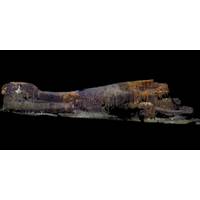
US Navy Sub Discovery Validated
warfare training exercise off the coast of Oahu, Hawaii. During the training, communication became sporadic and the boat sent her last communication to the Coast Guard cutter Reliance the evening of July 4. Navy's search of the area did not reveal the location of the submarine and two days later, a diesel oil slick appeared in the area. Later, a Navy Court of Inquiry could not determine the cause of the loss. During her service during WWII, she completed six war patrols and earned one battle star."We're thankful for the care and attention Tim and his team took in locating the wreck. Because
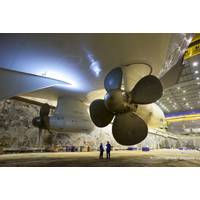
Polaris: World´s First LNG-Powered Icebreaker Delivered
rescue operations. Previous time an Finnish icebreaker with similar size range was completed in year 1994. Icebreaker Polaris' innovative design is used for the vessel’s hull form and propulsion unit arrangement, and the vessel is able to use either liquefied natural gas or low sulphur diesel oil as fuel. The vessel complies with the international IMO Tier III emission standards and special requirement for Sulphur emissions in the Baltic Sea. The vessel is equipped with three Azipod propulsion units rotating 360° which enables first-rate maneuvering qualities. The icebreaking capacity
KONGSBERG Signs Contracts for LNG Cruise Ferry Simulators
, helping them to deliver safe and efficient operations on board.” KONGSBERG’s model will contain the main training aspects for bunkering and operation of a cruise ferry that holds a multiple installation of the Wärtsilä 8L50DF medium speed (four stroke) Dual fuel (LNG) gas and diesel oil, generating power to a High Voltage switch board. It supports in-depth training of LNG-fuelled vessel crews, supporting them to recognise risks and be aware of specific points of attention related to LNG and operation of related systems. “We’re developing a highly accurate model
Salvors Assessing Grounded Transocean Drilling Rig
a supply line for the team so they can get equipment and supplies on board. Rope access technicians have created a safe alternative access after the prevailing weather conditions made it too difficult to winch the team down to the installation. The team from Transocean and Smit will look at the diesel oil tanks looking at how they might start procedures to transfer any fuel to other unbreached tanks within the rig so that it will be in a safe location well above the waterline, before any operation to refloat the rig commences. There’s also work going on in close proximity to the Transocean
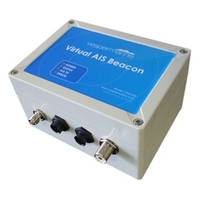
AIS Marks Hazardous Reefs Following Oil Spills
Zealand’s history, when the container ship Rena struck Astrolabe Reef spilling much of the ship’s cargo and fuel into the ocean causing immediate and long-term effects on the ecosystem. The ship was carrying 1,368 containers, as well as 1,700 tons of heavy fuel oil and 200 tons of marine diesel oil. Vesper Marine’s Virtual AIS Beacons, which are used to create Virtual Aids to Navigation (VAtoN), will be installed in early 2015. To be located on the existing Minden communications site, the Virtual AIS Beacon will project markers identifying Astrolabe Reef, Brewis Shoal, Okaparu
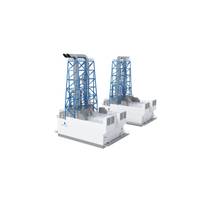
North Sea FPSO Power Contract for Wärtsilä
engines with generators, waste heat recovery units and all related fuel, oil and air and other utility systems. The modules are designed by Wärtsilä Ship Design. The engines are capable of being operated on a variety of fuel types, including treated well gas, heavy crude oil, and marine diesel oil (MDO). The ability to utilise produced gas and crude means that little or no MDO will need to be shipped to the FPSO. This will notably reduce operating costs. Furthermore, the efficient gas-fired power solution will have significantly lower levels of CO2 emissions compared to conventional
Wilhelmsen Lands Orders in Brazil Offshore Sector
installation onboard a quartet of Very Large Crude Carriers (VLCCs) being converted to Floating Production, Storage and Offloading (FPSO) vessels. The conversion of the VLCC hulls is scheduled take place in the Estaleiro Inhauma drydock where the IGG equipment, capable of operation both on marine diesel oil/gas oil and natural gas, will be installed. Once completed, the FPSOs will operate in the deepwater ‘pre-salt’ Santos Basin fields, 200km south of Rio de Janeiro. This order is in addition to two similar systems delivered last year, and makes Brazil an increasingly important market
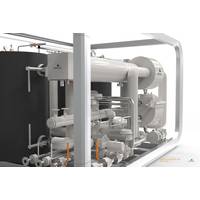
Wärtsilä Launches GasReformer
it into a stable composition that can be used as fuel for Wärtsilä engines. This means that oil platforms and FPSO's, which demand high levels of power, can utilize an energy source that was earlier not used at all. Furthermore, since the power demand was previously met using marine diesel oil (MDO), the bunkering of MDO can mostly be eliminated when using the GasReformer. This results in direct and measurable cost savings. "Wärtsilä has considerable experience in the treatment of gaseous fuels for fuel cells, and this patented product is a result of this development

Wärtsilä Powered FPSO Passes Load Tests
capability to fulfil all the required performance criteria as part of a complex offshore project, the viability of Wärtsilä’s dual-fuel technology is again verified. The Wärtsilä dual-fuel engines are capable of being run on treated well gas or treated crude, as well as marine diesel oil (MDO), which means that virtually no MDO will need to be shipped to the P-63. This will notably reduce operating costs. Furthermore, this efficient gas-fired power solution will also have significantly lower levels of CO2 emissions compared to conventional technologies. In real terms, it is estimated



 February 2024
February 2024





